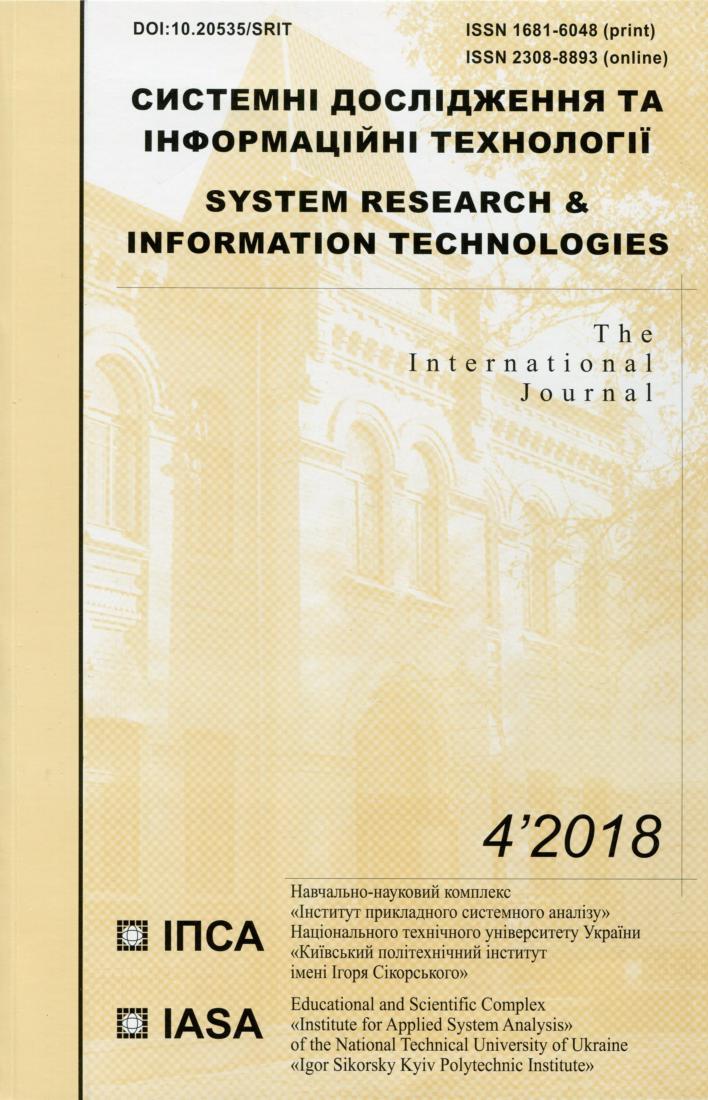Link between parameters of an observable system’s possible states set, measurement equation parameters and state space system dimension
DOI:
https://doi.org/10.20535/SRIT.2308-8893.2018.4.08Keywords:
algorithm of guaranteed ellipsoidal estimation, set of the attainability, "hyperlayer", equation of the measuring of the systems state, phase space of the system state, upper boundary of the system state estimate, least square methodAbstract
The paper considers guaranteed ellipsoidal estimation of a set of possible states of the linear system, using which a multidimensional volume of the ellipsoid approximating intersection of the a priori ellipsoid limiting a set of possible states of the system, and a set of dimensions representing a "hyperlayer" in the same state space is minimized. A theorem on the relationship between the parameters of the a priori ellipsoid, parameters of the measurement equation and dimension of the state space that provides improved estimation of the system state by a minimum criterion of the multidimensional volume of the a posteriori ellipsoid is formulated and proved. On the basis of the theorem, simplification of the estimation algorithm, which excludes a special case — division by zero and taking additional measures for this case, has been proposed. The proposed simplification leads to some deterioration of ellipsoidal estimation according to the accepted minimization criterion in general, but in the limiting case it converges to the optimum estimate. The results are illustrated by an example of estimation of the static system state. The optimum, simplified methods, the method proposed in this paper and the least squares method are compared. The following obtained values are presented: a point estimate and a multiple ellipsoidal estimate — which are the values of semi-axes of the a posteriori ellipsoids.References
Bakan G.M. K postroeniju robastnogo algoritma garantirovannogo otsenivanija sostojanija linejnoj upravljaemoj sistemy / G.M. Bakan, A.V. Sholohov // Problemy upravlenija i informatiki. — 2007. — № 1. — S. 16–25.
Sholohov A.V. K ellipsoidal'nomu otsenivaniju sostojanija linejnoj dinamicheskoj sistemy po skaljarnomu nabljudatelju / A.V. Sholohov // Systemni doslidzhennja ta informatsijni tekhnolohiyi. — 2008. — № 3. — S. 78–87.
Chernous'ko F.L. Otsenivanie fazovogo sostojanija dinamicheskih sistem / F.L. Chernous'ko. — M.: Nauka, 1988. — 320 s.
Judin D.B. Informatsionnaja slozhnost' i effektivnye metody reshenija vypuklyh ekstremal'nyh zadach / D.B. Judin, A.S.Nemirovskij // Ekonomika i matematicheskie metody. — 1976. — T. 12. — Vyp. 2. —S. 357–369.
Shor N.Z. Ob odnom semejstve algoritmov dlja reshenija zadach vypuklogo programmirovanija / N.Z. Shor, V.I. Gershovich // Kibernetika. — 1979. — №4. — S. 62–67.
Volosov V.V. Ob odnom sposobe postroenija ellipsoidal'nyh otsenok v zadachah nestohasticheskoj fil'tratsii i identifikatsii parametrov upravljaemyh sistem / V.V. Volosov // Avtomatika. — 1991. — № 3. — S. 24–32.
Voevodin V.V. Matritsy i vychislenija / V.V. Voevodin, Ju.A. Kuznetsov. — M.: Nauka, 1984. — 320 s.
Abramovich M. Spravochnik po spetsial'nym funktsijam s formulami, grafikami i tablitsami / M. Abramovich, I. Stigan. — M.: Nauka, 1979. — 832 s.
Brajson A. Prikladnaja teorija optimal'nogo upravlenija / A. Brajson, H. Ju-shi. — M.: Mir, 1972. — 544 s.

